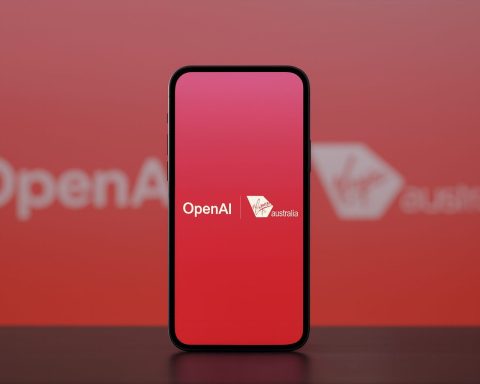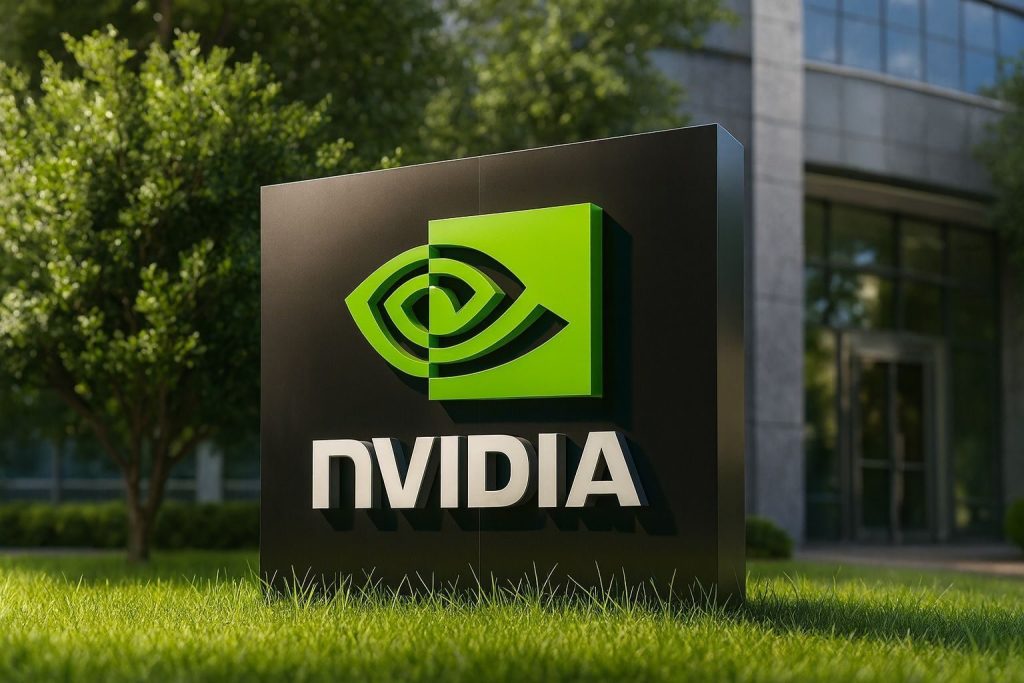Alphabet, Google’s parent company, is closing out 2025 in full sprint. The company has just delivered its first-ever quarter with more than $100 billion in revenue, is edging toward a $4 trillion market valuation, and is rolling out its most advanced AI model yet, Gemini 3 — all while facing landmark antitrust rulings and intense competition in cloud and devices. [1]
Below is a deep dive into how Google is evolving right now across AI, Search, Cloud, hardware, regulation and its workforce — and what it means for users, publishers, and investors.
Google’s AI Engine: Gemini 3 Becomes the New Center of Gravity
In November 2025, Google launched Gemini 3, describing it as its most intelligent and capable AI model so far. The model is built to tackle complex reasoning, understand multimodal input (text, images, audio) and power an entirely refreshed Gemini app experience. [2]
Key upgrades in the Gemini app include: [3]
- Improved reasoning and formatting for clearer, more useful answers.
- Generative interfaces that dynamically design layouts or tools based on your prompt (for example, turning a travel query into an interactive itinerary).
- Gemini Agent, an experimental AI agent that can orchestrate multi-step tasks, like organizing your inbox or researching and helping you book a car rental using information from Gmail and other Google apps.
Gemini 3 Pro is rolling out globally as the “Thinking” option in the model selector, with higher limits for paying Google AI Plus, Pro and Ultra subscribers. [4]
Demand has been strong enough that Google recently tightened free access limits. At launch, free users could send up to five Gemini 3 Pro prompts per day and create several AI images, but Google has since shifted to a “basic access” tier with dynamic limits and a stricter cap on daily image generation due to high demand. [5]
Inside the company, Gemini isn’t just a product — it’s the backbone of Google’s strategy. On the Q3 2025 earnings call, CEO Sundar Pichai said Google’s first‑party models, including Gemini, now process 7 billion tokens per minute via API, and generative AI products built on these models saw revenue grow more than 200% year over year. [6]
Record Results: Alphabet’s First $100 Billion Quarter and the $4T Race
Alphabet’s third quarter of 2025 was historic. According to its SEC filing, the company generated $102.3 billion in revenue, up 16% from $88.3 billion a year earlier. That makes it Alphabet’s first ever quarter above the $100 billion mark, with growth coming from Search, YouTube, Google Cloud and subscriptions. [7]
Highlights from Q3 2025: [8]
- Revenue doubled in five years, from roughly $50 billion per quarter to over $100 billion.
- Google Cloud posted about $15.2 billion in quarterly sales, up 34% year over year, with a run rate around $61 billion and a record ~$3.6 billion in operating income.
- Cloud’s global market share is now around 13%, behind Amazon Web Services (~30%) and Microsoft Azure (~20%).
- Alphabet has crossed 300 million paid subscriptions, led by Google One and YouTube Premium.
- The Gemini app has surpassed 650 million monthly active users, and Google says it processes over 1.3 quadrillion tokens per month across its surfaces.
On the market side, investors have responded enthusiastically. A Reuters report in late November noted that Alphabet’s share price had climbed nearly 70% so far this year, lifting its market cap to around $3.82 trillion — putting Google on the brink of joining the $4 trillion valuation club alongside Nvidia and Apple. [9]
That surge has been driven by confidence in Google’s AI leadership, its improving cloud profitability and even a vote of confidence from Warren Buffett’s Berkshire Hathaway, which has taken a stake in Alphabet. [10]
Search Reimagined: AI Overviews and AI Mode Change the Game
Perhaps the most visible change for everyday users in 2025 is what’s happening to Google Search.
In May 2025, Google detailed how AI Overviews — AI-generated summaries that appear at the top of search results — are now one of its most successful Search launches in a decade. In markets like the U.S. and India, AI Overviews are driving more than a 10% increase in usage for the types of queries that show them. [11]
Google has also rolled out AI Mode in Search, a new tab that turns Search into a more full-fledged AI assistant with: [12]
- Deeper reasoning powered by a custom Gemini 2.5 model.
- Deep Search, which can fan out hundreds of queries and synthesize a fully cited research-style answer.
- Live capabilities, letting you point your camera at something and chat in real time about what you’re seeing.
- Agentic features, such as scanning ticket sites and surfacing options that match your criteria, then handing you off to complete the purchase.
On the earnings call, Pichai said AI Overviews and AI Mode are already driving incremental total query growth, with AI Mode now at over 75 million daily active users after a rapid global rollout across 40 languages. [13]
For publishers and advertisers, this isn’t a small tweak. External SEO analyses in 2025 found that when an AI Overview appears, organic click‑through rates drop on average by nearly 9%, while ad CTRs can also fall significantly, contributing to more “zero‑click” searches where users get what they need without visiting external sites. [14]
In other words: Google’s AI upgrades are expanding Search engagement overall — but they’re also concentrating more user attention inside the Google experience, reshaping traffic patterns across the open web.
Google Cloud: From “Also-Ran” to Agentic AI Powerhouse
While Search and ads still generate most of Alphabet’s revenue, Google Cloud has become the fastest‑moving part of the business in 2025.
According to a year‑end breakdown of Google Cloud’s biggest stories, the division: [15]
- Hit a $61 billion annual run rate and a record quarter of $15.2 billion in sales, up 34% year over year.
- Delivered approximately $3.6 billion in operating income in Q3 alone, up 85% from the prior year.
- Cemented about 13% global cloud market share, still behind AWS and Azure but growing faster than both in 2025.
- Saw revenue from products built on generative AI models grow more than 200% year over year.
- Now has 13 product lines each at over $1 billion annual run rate.
Google has been spending tens of billions of dollars on data centers and AI infrastructure, announcing massive new investments in U.S. states like Texas, South Carolina, Arkansas, Iowa, Oklahoma and Virginia, as well as multibillion-dollar AI data centers in the U.K. and Belgium. Capital expenditures for 2025 are expected to reach around $85 billion, much of it driven by AI workloads. [16]
On the product side, 2025 has been the year Google Cloud planted its flag as an agentic AI platform:
- It launched Gemini Enterprise, a front door for enterprise AI that combines Google’s models, third‑party and custom agents, and no‑code tools so business users can orchestrate AI agents themselves. [17]
- Google Cloud is providing up to 1 million TPU chips to Anthropic and now also powers parts of OpenAI’s infrastructure, underscoring its role as a neutral AI infrastructure provider. [18]
- Google announced a planned $32 billion acquisition of Wiz, a leading cloud security company, to strengthen multi‑cloud cybersecurity (the deal is expected to close in 2026). [19]
Taken together, Cloud has shifted from being a margin drag to a core profit driver, tightly integrated with Google’s AI roadmap.
Pixel 10 and Devices: Google AI in Your Pocket
On the consumer side, Google is using its hardware portfolio to showcase what Gemini can do in everyday life.
The Pixel 10 series, unveiled in August and now on sale, is built around the new Tensor G5 chip, which Google describes as Pixel’s biggest performance leap yet. The chip is custom‑designed to run advanced Google AI features while delivering all‑day battery life and premium camera performance. [20]
Notable Pixel 10 features include: [21]
- Gemini built into the phone, enabling features like Ask Photos (describe the photo you want and let AI find or edit it) and AI‑powered magic in the camera.
- Magic Cue, which proactively surfaces helpful information (like automatically pulling up a restaurant address when a friend texts you about dinner).
- Up to 24+ hours of battery life, fast wired charging and new “Pixelsnap” Qi2 magnetic charging.
- Seven years of security and OS updates, extending the device’s life and helping justify premium pricing.
Google is also experimenting with new form factors. In Q3 remarks, Pichai highlighted Android XR, a new operating system for headsets and glasses, launching first with Samsung’s Galaxy XR device and placing Gemini at the core of spatial computing experiences. [22]
Regulatory Heat: Search Remedies, Ad Tech Trial and EU Cloud Politics
While AI is powering growth, Google is operating under the most intense regulatory scrutiny in its history.
U.S. search monopoly ruling
In September 2025, the U.S. Department of Justice announced that a federal court had ruled Google’s search business an illegal monopoly and imposed structural remedies aimed at curbing its power. The ruling targets Google’s exclusive default search deals and requires changes designed to open distribution to rival search engines and ensure more neutral treatment, including in new AI surfaces like Gemini and AI Mode. [23]
Reuters noted that Google avoided a forced spin‑off of its Chrome browser but faces restrictions that will shape how it can bundle search and new AI features across platforms. [24]
Ad tech breakup risk
Separately, the DOJ’s ad tech case against Google has gone to trial, with prosecutors arguing that Google’s dominance in ad exchanges and ad‑serving tools harms competition. Closing arguments this fall focused on the government’s request that Google be forced to divest key ad tech assets — a move that could unwind much of its DoubleClick-era integration if the court agrees. [25]
EU cloud battles
On November 28, 2025, Reuters reported that Google had withdrawn its EU antitrust complaint against Microsoft over cloud computing practices. The decision came just days after EU regulators opened a broader investigation into the cloud sector, examining whether features of the market unfairly reinforce the dominance of Microsoft Azure and Amazon Web Services. [26]
In that same report, market share data shows AWS with about 30%, Microsoft with 20%, and Google with 13% of global cloud computing. Regulators could eventually designate Microsoft and Amazon as gatekeepers under the EU’s Digital Markets Act, subjecting them to stricter rules — a dynamic that could indirectly benefit Google Cloud as it pushes for “choice and openness” in the market. [27]
Reshaping the Workforce for the AI Era
Like much of Big Tech, Google has been retooling its workforce for an AI‑first world.
A comprehensive TechCrunch tracker of 2025 tech layoffs notes that Google has: [28]
- Downsized its smart TV division (including Google TV and Android TV) by about 25% of a 300‑person team, cutting funding for that unit while increasing investment in AI projects.
- Laid off hundreds of employees in its platforms and devices division, which spans Android, Pixel, Chrome and more.
- Conducted smaller rounds of cuts in user experience roles and elsewhere, even as Google Cloud remained relatively light on layoffs compared to AWS and Microsoft.
Publicly, Sundar Pichai has acknowledged that AI will eliminate some jobs but argues that many roles will “evolve and transition” and that AI can act as an “accelerator” creating new products and, over time, new jobs. He has also said AI systems will soon handle more complex tasks as agents acting on users’ behalf — echoing Google’s Gemini Agent and AI Mode strategy. [29]
The message is clear: Google is trimming areas that don’t align with its AI priorities while hiring aggressively in AI research, cloud infrastructure, security, and enterprise sales.
What It All Means: Opportunities and Risks Around Google
As 2025 winds down, Google looks more “AI‑first” than at any point since Pichai first used the phrase.
For users, that means more powerful, conversational interactions with Search and apps like Maps, Photos and Android — but also more of your activity flowing through AI layers (and therefore more responsibility on Google around privacy, safety and transparency). [30]
For businesses and developers, Google is positioning Gemini and Google Cloud as a full‑stack AI platform — from TPUs and GPUs to models, agents, and enterprise tools like Gemini Enterprise. Early signs point to strong demand, with many large customers processing trillions of tokens per year on Google’s models. [31]
For investors, Alphabet offers a rare combination in 2025: high growth, rising profitability in Cloud, and a dominant position in both consumer search and enterprise AI. But the risks are equally clear:
- Heavy capital spending on data centers and chips. [32]
- Historic regulatory pressure in search and ads, both in the U.S. and Europe. [33]
- Valuation concerns, with Reuters warning that $4 trillion‑level market caps may invite bubble comparisons if fundamentals don’t keep pace. [34]
Key Takeaways
- Google is now an AI‑platform company first. Gemini 3, AI Mode in Search and Gemini Enterprise show how deeply AI runs through Search, Cloud, and consumer devices. [35]
- Alphabet’s financial engine is firing on multiple cylinders. A $102.3 billion quarter, rapid Cloud growth and hundreds of millions of paid subscribers underpin its race toward a $4 trillion valuation. [36]
- Regulation and competition will shape the next chapter. Remedies in search, a possible ad tech breakup, EU cloud scrutiny and fierce AI rivalries will determine how durable Google’s current momentum really is. [37]
If 2023 and 2024 were the years Google scrambled to prove it hadn’t fallen behind in AI, 2025 is the year it reasserted itself — not just as a search giant, but as one of the central infrastructure providers of the AI economy.
References
1. www.sec.gov, 2. blog.google, 3. blog.google, 4. blog.google, 5. 9to5google.com, 6. blog.google, 7. www.sec.gov, 8. www.sec.gov, 9. www.reuters.com, 10. www.reuters.com, 11. blog.google, 12. blog.google, 13. blog.google, 14. www.evergreen.media, 15. www.crn.com, 16. www.crn.com, 17. www.crn.com, 18. www.crn.com, 19. www.crn.com, 20. store.google.com, 21. store.google.com, 22. blog.google, 23. www.justice.gov, 24. www.reuters.com, 25. www.reuters.com, 26. www.reuters.com, 27. www.reuters.com, 28. techcrunch.com, 29. timesofindia.indiatimes.com, 30. blog.google, 31. blog.google, 32. www.crn.com, 33. www.justice.gov, 34. www.reuters.com, 35. blog.google, 36. www.sec.gov, 37. www.justice.gov










